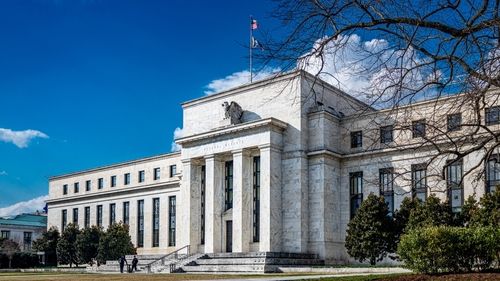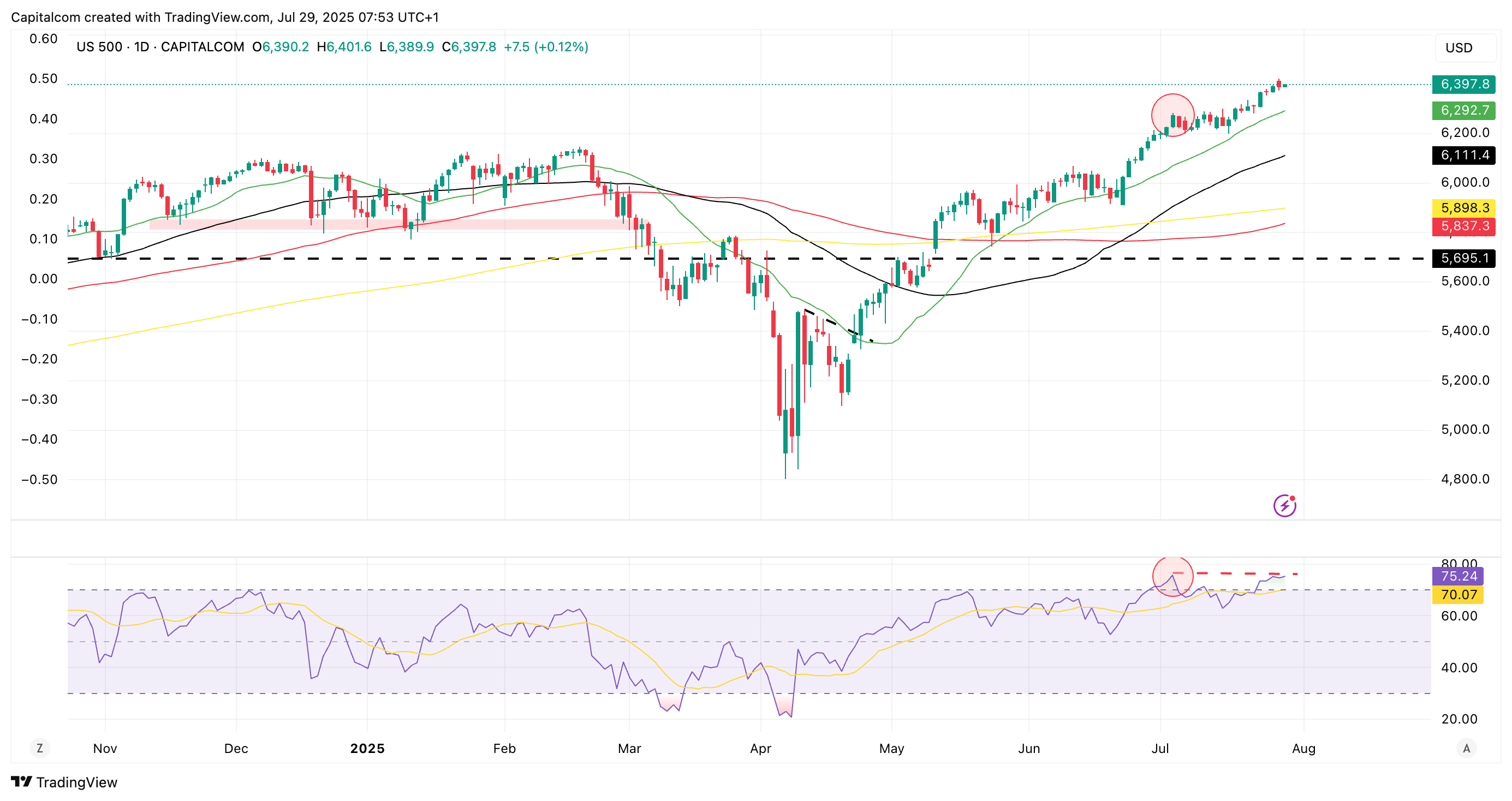FED Preview: no rate cut despite political pressure as data remains resilient
The Federal Reserve is expected to keep rates unchanged in July as economic data remains resilient and tariff threats diminish
As the Federal Reserve convenes for its latest policy meeting, markets are widely anticipating that the central bank will leave interest rates unchanged. With strong economic data pointing to continued resilience in the U.S. economy, the case for rate cuts remains unconvincing—at least for now.
The meeting comes at a time when external pressures are mounting for a rate cut, especially from US President Donald Trump. However, from a data-driven perspective, the central bank has little justification to ease policy. Furthermore, recent developments in trade, including deals that have lessened the immediate threat of tariffs, have reduced one of the key uncertainties that previously loomed over markets.
With inflation still above target, there is little incentive for the Fed to act prematurely. Instead, focus is expected to shift toward the Fed’s forward guidance and how policymakers interpret incoming data on inflation, labour, and growth.
Key Data Releases to Watch
While the meeting itself is not expected to deliver a policy shift, it will be heavily influenced by a series of key data releases:
- PCE Inflation (Post-Meeting): The Fed’s preferred inflation gauge is due the day after the meeting concludes. Although recent CPI data showed only moderate price pressures, some signs of tariff-related cost increases are beginning to appear as businesses work through inventories and begin passing costs onto consumers.
- GDP Growth (Day of Meeting): Second-quarter GDP is projected to show annualized growth of around 2.3% to 2.4%, confirming continued economic strength despite prior weakness in early 2025. This compares favourably to stagnation seen in other developed economies.
- Jobs Report (Later in the Week): Expectations are for stable employment conditions, with only a slight uptick in the unemployment rate. If the labour market continues to surprise to the upside—as it has in recent months—it would further reinforce the Fed’s cautious stance.
Market Sentiment and Expectations
Markets are currently pricing in one to two rate cuts before year-end, with the first expected as early as October. However, these expectations may be overly optimistic. The Fed has consistently emphasized the importance of data in its policy decisions, and current economic conditions do not present a compelling case for easing.
Resilient consumer spending, strong earnings, and robust GDP growth suggest the economy is withstanding the pressures of elevated interest rates. In this environment, the central bank is more likely to delay cuts until inflation shows sustained progress toward target or labour market data signals a broader slowdown.
Equity markets have responded positively to the diminished trade risks and strong corporate earnings. Major indices such as the S&P 500 continue to test new highs, supported by optimism over economic fundamentals.
However, this optimism may carry risks. Technical indicators such as the Relative Strength Index (RSI) point to overbought conditions, suggesting the potential for a pullback. Traders should watch out for a potential RSI divergence as the indicator is flattening out before having created a higher high from the July 3rd peak, with price having easily surpassed it. With investor positioning heavily tilted toward risk assets, any disappointment—whether in data or policy tone—could trigger volatility.
Despite this, the prevailing sentiment remains bullish. With the worst-case tariff scenarios off the table and earnings holding strong, many investors see little reason to sell. Instead, the narrative has shifted from caution to confidence.
S&P 500 daily chart
(Past performance is not a reliable indicator of future results)
Conclusion: Wait-and-See Continues
The July Fed meeting is likely to reaffirm a cautious, data-dependent stance. With inflation still sticky and economic activity showing few signs of deterioration, the Federal Reserve appears poised to keep interest rates on hold while continuing to monitor incoming data closely.
The messaging from this meeting could help clarify whether policymakers are leaning toward cuts later in the year or remain sceptical of current market pricing. Either way, the central theme is clear: patience is prevailing over pressure, and the data will dictate the next move.